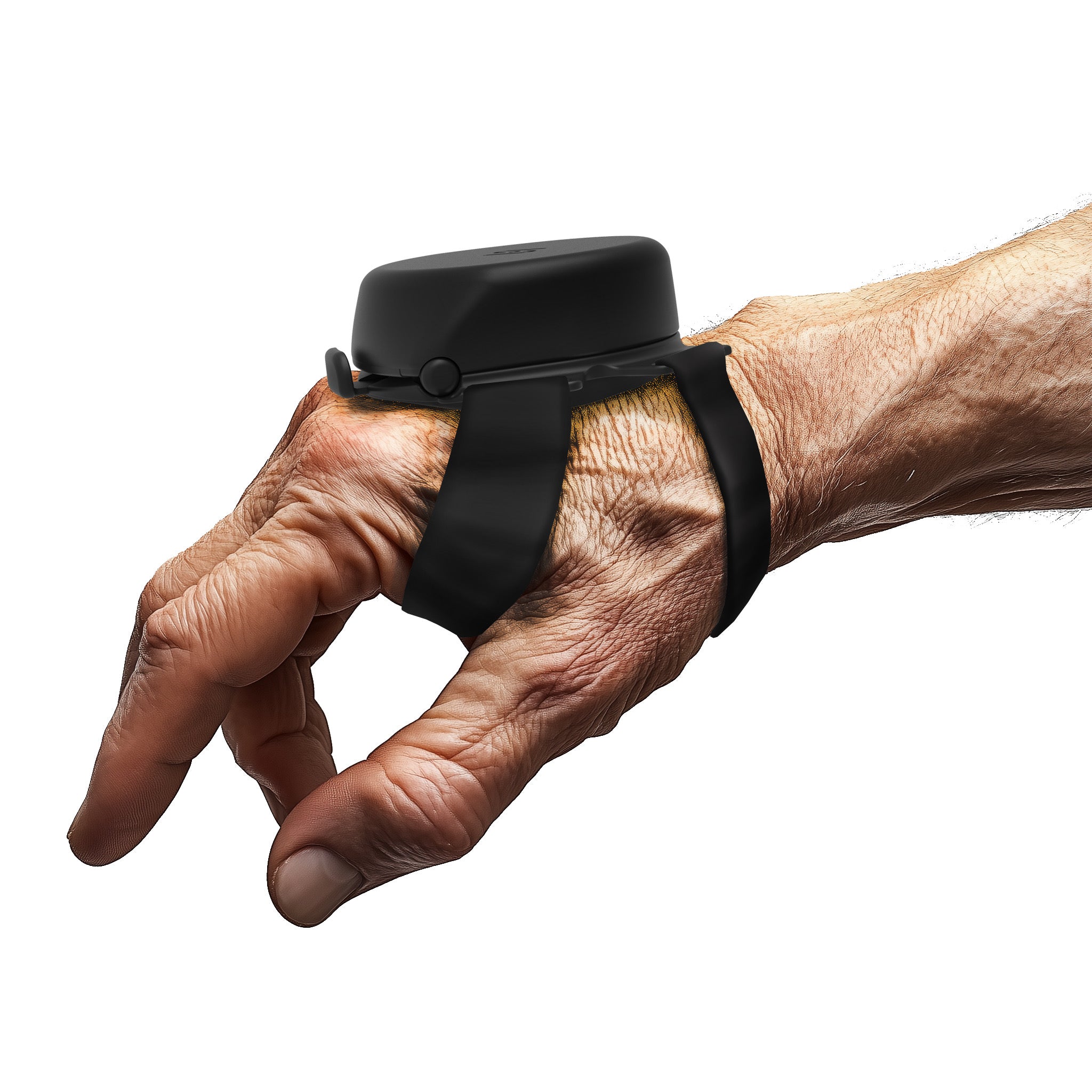Essential tremor (ET) is a neurological condition that results in involuntary and rhythmic shaking, most frequently in the hands. However, it can also affect the head, voice, and other body parts. Essential tremor is more often thought of in association with adults but can occur in children too, raising parents' fears about kids shaking hands or baby’s trembling hands.
This blog will discuss the causes, symptoms, and management options for essential tremors in children.
Deep Insights into Essential Tremor in Children:
What Causes Essential Tremor in Children?
Essential tremor in youngsters is thought to be genetically influenced, just as it is in older individuals. The specific etiology, nevertheless, still needs precise definitions. Frequently, parents inquire why offspring exhibit shakiness while performing tasks like writing or eating with hands which is enough to make them quiver. It is important to differentiate basic shaking disorder from other diseases with similar presentations, including concern for hyperthyroidism or certain medications. The primary cause is believed to be a genetic influence, though the exact cause remains unclear. Other potential factors may include abnormal brain activity in the thalamus, a part of the brain responsible for motor control, and disruptions in the communication between nerve cells.
Recognizing the Symptoms: Is Your Child Experiencing Tremors?
Essential tremor symptoms in children are diverse; however, it is most commonly identified through handshaking among kids. Typically, these tremors become evident when a child tries to accomplish tasks requiring fine movements like holding a pencil or using cutlery. In infants’ cases, weak twitching hands may indicate the presence of essential tremor but that occurs less often within this group of individuals. The tremors may be imperceptible or disrupt ordinary activities depending on their severity.
To help parents recognize essential tremors in their children, it's important to observe when the tremors occur and how they affect daily activities. Tremors often become more noticeable during tasks requiring fine motor skills, like writing or using utensils, and can vary in severity. In some cases, tremors may also affect other areas, such as the head or voice. Factors like stress, fatigue, or excitement can exacerbate the symptoms. By carefully observing these signs and keeping track of their frequency and severity, parents can more effectively recognize potential tremors and pursue early intervention.
Understanding the Difference Between Essential Tremor and Other Conditions:
Differentiating between essential tremors and other neurological disorders is significant for favorable diagnosis and treatment. Essential tremors are neurologic disorders that highly influence voluntary movements like those of writing, eating, or holding things in hands, most of the time inherited. A noteworthy feature of essential tremors is the lack of additional neurological deficits (like muscle weakness or sensation changes) which do occur in other conditions. Usually, symmetrical tremors worsen with stress or movement but are hardly ever noticed while one’s muscles are at rest.
On the other hand, tremors caused by Parkinson’s disease have their unique symptoms. They are often asymmetrical with an initial onset in one hand (unilaterally) as opposed to being bilateral (essential tremors); moreover, they occur while at rest and not during body activity. In addition, this pathology has other features such as rigidity (muscle stiffness), bradykinesia (slowness of movement), and shuffling gait. The description of these tremors commonly includes “pill-rolling” where the thumb and fingers seem to roll around each other.
Dystonia which may also be associated with tremor is another condition that should be ruled out; it’s characterized by sustained or intermittent muscle contractions resulting in unusual postures or movements that are sometimes painful. Essential tremors differ from dystonic actions; they occur without any muscular seizure associated with them
Early Signs and Differentiation of Essential Tremor in Children
It can be quite hard for parents to detect these early signs of essential tremor in children, particularly in differentiating it from other conditions. Subtle signs may be noticed by parents and are likely to become clearer as the child matures. Here are some of them:
- Fine motor difficulties: Struggling with tasks like buttoning a shirt or tying shoelaces.
- Hand tremors during specific activities: Shaking that becomes noticeable when writing or drawing.
- Head or voice tremors: Less common, but may occur as the child tries to speak or maintain a still posture. Understanding these early signs can help differentiate essential tremors from other conditions like anxiety or hyperthyroidism, leading to more accurate diagnoses and treatment.
How is Essential Tremor Diagnosed in Children?
Most parents become concerned when they see their child’s hands shake and therefore consult pediatricians. This is usually the first step pediatricians take to address these peculiar movements. Essential tremor diagnosis in children requires a wide-ranging approach. The process begins with a comprehensive medical history aimed at understanding when the tremor started, how often it occurs, its characteristics, and whether anyone else in the family has experienced similar symptoms before. After this, a physical examination is carried out to look into characteristics of tremors like location, and severity as well as if specific activities worsen them.
In cases where other neurological problems that might show similar symptoms are suspected, the pediatrician could refer the patient to a neurologist. The neurologist may carry out more investigations such as brain scans like MRI scans or CT scans that will help detect any structural abnormalities or he/she can do laboratory tests aimed at ruling out metabolic causes such as hyperthyroidism. In some situations, an electromyogram (EMG) may be utilized to assess how well muscles respond or how well nerves function over time. Confirming essential tremor via these diagnostic tools alongside extensive clinical examination helps distinguish it from other possible conditions thus assisting physicians to give suitable remedies for children who suffer from it..
Management and Treatment Options for Essential Tremor in Children
The management among kids is aimed at improving their living standards as well as minimizing the effects of shivering on their daily lives. Even though this condition has no known cure, different treatment techniques have been put in place to ease its symptoms. These are some of the main strategies:
- Medications: Some drugs may relieve tremors, although prescribing them depends on the age of the child and the severity of the conditions.
- Physical Therapy: Kids can be shown how to use their hands better and to decrease the severity of their shaking so that they can perform every day activities by undergoing physical and occupational therapy.
- Lifestyle Modifications: To help children with tremors perform activities like eating and writing, simple changes such as using weighted utensils and adaptive tools can be effective.
- Counseling and Support: Shaking tremors can lead to embarrassment or anxiety in social situations. Parents can seek help from doctors to manage the emotional impact of children with these conditions.
Enhancing Daily Life for Children with Essential Tremor

Treating essential tremors in children involves not only medication but also lifestyle changes to help them live better lives and significantly boost their happiness. As a parent, you may want your kid to be free from them so that they can live a normal life without being embarrassed or frightened by them by doing some things like:
- Assistive Gadgets: Providing weighted pencils or special grips can make writing easier for children with tremors.
- Incorporating stress-reducing techniques: Activities like yoga or mindfulness exercises can help reduce the severity of tremors during stressful situations.
- Encouraging participation in physical activities: Sports that focus on gross motor skills, like swimming, may be less impacted by tremors and can boost confidence.
These adjustments can empower children to manage symptoms more effectively and lead active, fulfilling lives.
The Role of Genetics in Essential Tremor
Genetics strongly influences essential tremor and can often be traced back to family ties in 50% of cases. If one of your parents suffers from essential tremor, you may also develop it as there is a 50% chance you will inherit it. This genetic link makes family medical history an important consideration when diagnosing and managing this disorder in children. For families who need to know about possible transmissions and the consequences on their future, genetic counseling can be a real help.
Long-Term Outlook: What to Expect as Your Child Grows
The children that have essential tremors will have a different prognosis in the long term depending on the intensity of these symptoms and how well they are managed. Sometimes, tremors may stay mild and possibly not disrupt one’s daily life much. But in some children, these tremors could get worse as they grow older particularly when there is stress or fatigue.
Steadiwear: Innovative Solutions for Managing Tremors

If you’re anxious about your child’s tremors then advanced devices from Steadiwear may be what you need. We have developed the Steadi-Two glove designed to stop hand shaking and make it easy for children and adults to cope with symptoms. This is very important for kids with essential tremors because it gives them more freedom and confidence in doing things on their own.
The glove is lightweight, comfortable to wear, and adjusts to the user's tremors in real time, providing steady support throughout the day. By using this device, patients can participate more fully in everyday activities, enhancing independence and quality of life.
Conclusion
Essential tremor which we commonly refer to as a kid trembling condition is a complex disorder that needs to be understood, diagnosed early, and well managed. If your child shows signs of handshakes or has a baby who has trembling limbs you should consult a doctor to discuss the right treatment options for him/her.
FAQ
Essential tremor is incurable, but it can coexist with innovative solutions such as those offered by Steadiwear plus proper health management so that affected teenagers can still live comfortable lives. The best way for parents to help kids succeed is through being updated about the latest happenings and acting accordingly.



